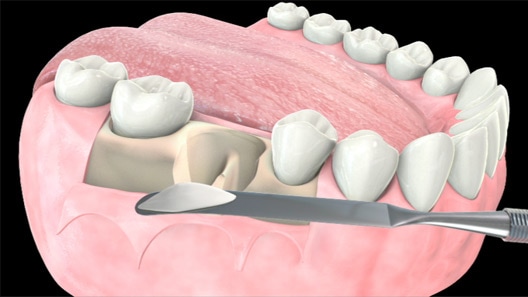Dental implants in Sydney are now becoming an accepted treatment for replacing any missing teeth. In many cases, dental implants are preferred as an alternative to a partial denture or bridge. However, the placement of dental implants requires consideration and careful evaluation, particularly with respect to the bone where the dental implant is to be placed.
Ensuring the Bone Volume
A dental implant is a metal post made of titanium that is placed into your jawbone and is used as an anchor on top of which a crown is placed. When the dental implant is placed, the main aim is to ensure that it is completely stable or osseointegrated within your jaw bone, so that it is strong enough to support the crown on top of it. You must take care to ensure that there is enough bone around the implant so that it provides strength and stability to your implant.
Thus, a major concern when placing a dental implant is ensuring whether sufficient volume of bone is available around it, in terms of height, width, and depth.
Requirement of Bone around the Dental Implant
In general, at least 1 mm of bone is required around the dental implant. While the implant is next to another implant or a tooth, more space is needed (i.e., 2 and 3 mm respectively). In the case of not having enough bone to completely envelope the implant, your dentist may suggest the bone graft process.
While evaluating the height of your bone, there should be enough bone so that the implant should be fully submerged. But it is important to ensure that the implant doesn’t go so deep as to impose on other anatomic structures like the sinus in the upper jaw or the nerve in the bottom jaw. When placing implants in your upper jaw, they may not have enough room vertically, and a sinus lift will be required to rebuild the bone.
Types of Bone Grafts
The bone graft for dental implants is the process of adding bone or a bone-like material to increase the volume of bone in your jaw. Usually, the bone is placed and set to heal before the dental implant is placed. The healing period of the bone graft can vary, depending on the type of bone used.
Many types of bone graft procedures are available, and four of them are mentioned below.
- Autograft
- Allograft
- Xenograft
- Synthetic
Autograft
Autograft or autogenous bone grafting involves utilising the bone which is taken from the same individual who is receiving the graft procedure. The bone can be harvested from nonessential bones, like mandibular symphysis, iliac crest, and anterior mandibular ramus.
The bone in the transplanted site requires sufficient blood supply. Depending on the size of the graft and where the transplant is to be made, an additional supply of blood will be needed. For this type of bone grafts, along with the donor’s bone, extraction of the periosteum and blood vessels might also be required. This type of bone graft is also known as a free flap graft.
Allograft
In allograft, the bone is derived from humans. The main difference is that allograft is harvested from an individual other than the patient who is receiving the graft. It is usually sourced from the bone bank.
Xenograft
Xenografts are bone grafts from the species other than human, like bovine and that are used as a calcified matrix. In this case, sufficient bone will be obtained, and secondary donor site is not necessary. The xenograft is safe and has been in use for many years.
Synthetic
Artificial bone is made from ceramics such as bioglass, calcium phosphates, and calcium sulphates are biologically active depending on solubility in the physiological environs. These materials combine with other growth factors.
The type of bone graft chosen will depend on the situation, and the amount of bone required.
Perfect Time for Bone Graft
Depending on the situation, the bone grafts may be placed at the same time of your implant procedure, or before. It saves time and is more convenient while placing the implant and graft at the same time, but sometimes the clinical situation doesn’t allow.
If the bone graft should be placed before the dental implant procedure, it is important to follow the timelines set out for your treatment. Since, if the dental implant procedure is done soon after the bone graft procedure, the graft may not have enough time to heal and become solid. Also, if the dental implant is placed after a very long time, melting and reabsorption of the bone graft may happen, that result in loss of bone volume. Therefore, the dental implant placement is typically suitable for the spot where sufficient healing and minimal reabsorption has occurred.



